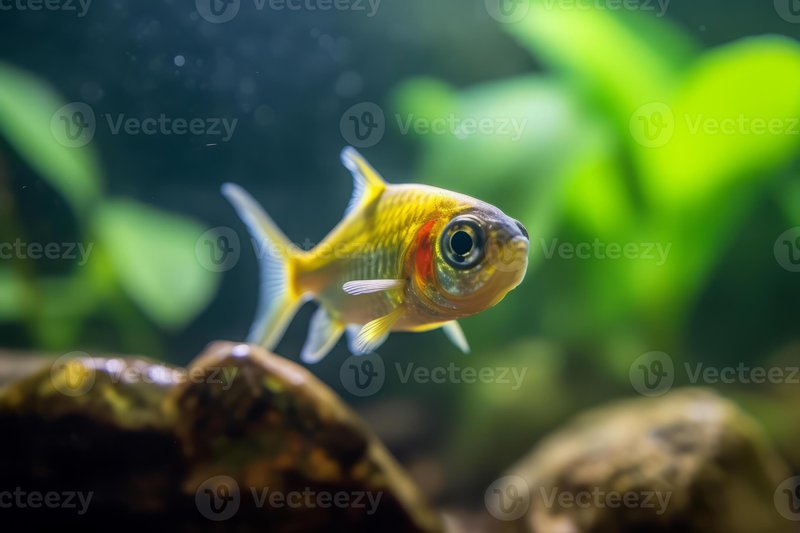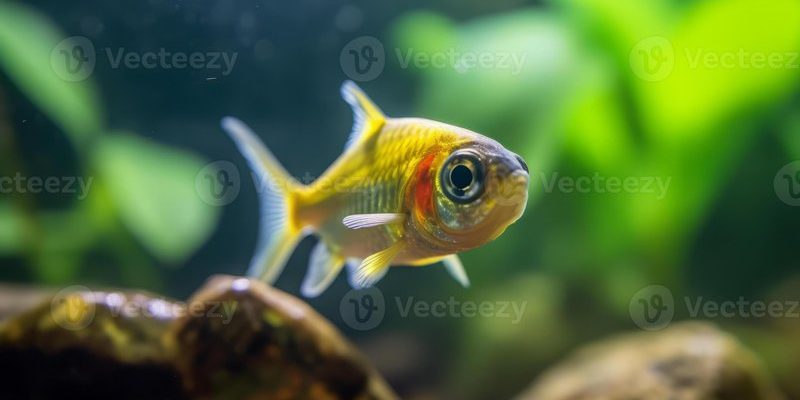
Understanding tetra behavior can be a game-changer for any aquarium owner. Just like you might notice when a friend is feeling off or unusually energetic, these fish exhibit behaviors that can signal their moods, health, or even compatibility with tank mates. So, let’s unpack what to watch for when observing your tetras and what those behaviors really mean.
Common Tetra Species and Their Traits
Tetras come in a variety of species, each with its own quirks and characteristics. The most popular types include the Neon Tetra, Cardinal Tetra, and the Rummy Nose Tetra.
– Neon Tetra: Known for their striking blue and red colors, these fish are social and prefer to school with others. If you notice your neon tetras swimming closely together, it’s a good sign they feel safe and comfortable in their environment. However, if they start hiding or isolating, it might indicate stress or illness.
– Cardinal Tetra: These tetras boast brilliant colors similar to neon tetras but are larger. They also enjoy being in groups. If you spot them swimming erratically or darting around, it might be a sign of excitement or even aggression from other tank mates.
– Rummy Nose Tetra: Recognizable by their bright red noses, these tetras are often considered more peaceful. Their behavior usually reflects their mood through color changes. A dull coloration can indicate stress, while vibrant colors suggest they’re happy and thriving.
Understanding these species helps you appreciate their behaviors better, as each has its own social structure and needs within the aquarium.
Social Behavior: Schooling and Interactions
One of the standout features of tetras is their schooling behavior. These fish are naturally inclined to swim in groups, which makes them feel more secure. When you see them swimming together, it’s not just a charming sight; it’s a vital part of their social structure.
If you have a small number of tetras, you might notice that they seem less active or hide more often. Tetras thrive in groups of six or more, so having a larger school can really boost their confidence. If they’re frequently separating from the group or acting skittish, this could indicate they’re feeling unsafe or stressed.
Here’s the thing: if your tetras are interacting playfully, you’ll notice them chasing each other or engaging in gentle nipping. This can be normal, especially among males competing for territory. Just keep an eye on it—if the nipping turns aggressive, it might be a sign to rearrange your tank or add more hiding spots.
Feeding Behavior: What to Look For
Tetras are typically eager eaters, and their feeding behavior can also reveal a lot. When it’s feeding time, watch how they respond. If they’re darting to the surface and snatching up food with enthusiasm, that’s a great sign they’re healthy and happy!
However, if your tetras seem disinterested or are leaving food uneaten, it might be time to check a few things. Could it be stress? Is the water temperature off? Or perhaps the tank mates are bullying them? Addressing these issues will often get them back on track.
Also, when feeding tetras, consider offering a balanced diet that includes flakes, pellets, and occasional treats like brine shrimp or bloodworms. A varied diet not only keeps them healthy but also encourages lively behaviors during feeding time.
Stress Indicators: Signs to Watch For
Stress can significantly impact your tetras, and it’s crucial to recognize the signs early. If your tetras are hiding more than usual or displaying dull colors, that’s your cue to investigate further. These fish can show stress for various reasons, including poor water quality, overcrowding, or aggressive tank mates.
Another sign of stress is erratic swimming. Instead of their usual patterns, stressed tetras might swim rapidly or seem lost, darting around the tank. This behavior is often accompanied by clamped fins, where their fins are held close to their bodies rather than spread out.
To ease your tetras’ stress levels, ensure they have plenty of hiding spots, maintain clean water with balanced pH levels, and avoid overcrowding. Sometimes, introducing more plants or decorations can make a world of difference in how secure they feel.
Signs of Health: Keeping an Eye on Your Tetras
Monitoring your tetras for signs of good health is just as important as watching for stress. Healthy tetras are usually active and social, swimming confidently in their school. They should also have bright, vibrant colors without any signs of cloudy eyes or lesions on their bodies.
If you notice your tetras exhibiting strange behaviors, like excessive scratching against tank decor or floating at the surface, it could indicate illness. Common tetra ailments include fin rot or ich, so it’s essential to observe their behavior closely.
Regularly checking water parameters—like ammonia, nitrite, and nitrate levels—can help keep your fish in tip-top shape. Remember, a clean and well-maintained tank is the backbone of happy, healthy tetras!
Compatibility with Other Fish
Tetras are generally peaceful, but not all fish are suitable companions. They can thrive with other small, peaceful species like guppies, rasboras, or corydoras. However, if you introduce larger or aggressive fish, you might notice some unwanted behaviors.
For instance, if your tetras are hiding constantly or swimming erratically, it could mean they’re feeling threatened. This might push them to stress and disrupt their normal behavior. Ideally, you want a well-balanced community tank where everyone can coexist peacefully.
Pay attention to how your tetras interact with their tank mates. If they start to show signs of aggression or fear, it might be worth reassessing the tank’s inhabitants. Sometimes, a simple rearrangement of the tank layout or adding more hiding spots can significantly improve the atmosphere.
Understanding the behavior of your tetras is all about observation and awareness. By paying attention to their social interactions, feeding habits, stress signals, and overall health, you can create a thriving environment for these beautiful fish. Remember, a happy tetra is an active tetra!
So, next time you glance at your tank, take a moment to really watch your tetras. You might just discover a whole new side to their personalities! And remember, keeping their habitat clean, secure, and well-suited to their needs will help them flourish. With a little love and attention, you’ll enjoy watching your tetras swim happily for years to come.

